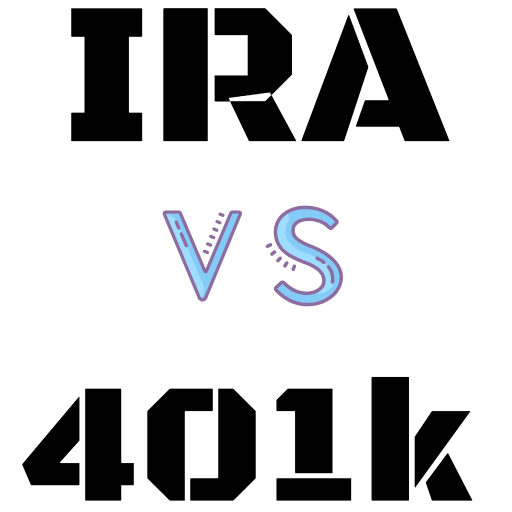
The 2021 limit for contributions to Roth and traditional IRAs is $6,000, or $7,000 if you’re age 50 or older, remaining unchanged from 2020. But there are restrictions that could affect how much you can contribute and what you can deduct on your tax return.
Key Takeaways
- The 2021 combined annual contribution limit for Roth and traditional IRAs is $6,000 ($7,000 if you’re age 50 or older)—unchanged from 2020.
- Roth IRA contribution limits are reduced or eliminated at higher incomes.
- Traditional IRA contributions are deductible, but the amount you can deduct may be reduced or eliminated if you or your spouse is covered by a retirement plan at work.
- Lower-income taxpayers may be eligible for the “saver’s credit” if they contribute to an IRA.
2021 IRA Contribution Limits
For 2021, the most you can contribute to your Roth and traditional IRAs is a total of:
- $6,000 if you’re younger than age 50
- $7,000 if you’re aged 50 or older
For the 2021 tax year, you have from Jan. 1, 2021, to April 15, 2022, to contribute to an IRA.
You Can Only Contribute “Earned Income”
You must have enough “earned income” to cover your contribution to an IRA. If your earned income for the year is less than the contribution limit, you can only contribute up to your earned income. For example, if you earned $3,000, you can contribute a maximum of $3,000.
There are two ways to get earned income: Work for someone else who pays you, or own or run a business or farm.
Earned income includes money from wages, salaries, tips, bonuses, commissions, and self-employment income. Also, the IRS considers disability retirement benefits as earned income until you reach the age at which you could have received a pension or annuity if you didn’t have a disability.
Some types of income don’t count as earned income, including:
Alimony, which represents court-ordered payments to a spouse per a divorce agreement, typically does not count as earned income from an IRA standpoint. However, taxable alimony is counted as earned income if the divorce agreement was signed on or before December 31, 2018. Please consult a tax professional and review your divorce agreement to determine whether your alimony income is considered taxable or not.
Spousal IRAs
If you don’t have earned income—but your spouse does—you can open what’s called a spousal IRA. These accounts allow a person with earned income to contribute on behalf of their spouse who doesn’t work for pay.
To be eligible for a spousal IRA, you must be married and file a joint tax return.
You can structure a spousal IRA as a traditional or Roth IRA. Either way, the spouse with earned income can contribute to the IRAs of both spouses, provided they have enough earned income to cover both contributions.
2021 Roth IRA Income Limits
You can contribute to a traditional IRA regardless of how much money you earn. But you’re not eligible to open or contribute to a Roth IRA if you make too much money.
If you make too much money, you may still be able to contribute to a Roth IRA using a strategy called a “backdoor” Roth IRA.
Here’s a rundown of the 2021 Roth IRA income and contribution limits, based on your filing status and modified adjusted gross income:
| 2021 Roth IRA Income Limits | ||
|---|---|---|
| Filing Status | Modified AGI | Contribution Limit |
| Married filing jointly or qualifying widow(er) | Less than $198,000 | $6,000 ($7,000 if you’re age 50 or older |
| $198,000 to $208,000 | Reduced | |
| $208,000 or more | Not eligible | |
| Single, head of household, or married filing separately (and you didn’t live with your spouse at any time during the year) | Less than $125,000 | $6,000 ($7,000 if you’re age 50 or older |
| $125,000 to $140,000 | Reduced | |
| $140,000 or more | Not eligible | |
| Married filing separately (if you lived with your spouse at any time during the year) | Less than $10,000 | Reduced |
| $10,000 or more | Not eligible | |
There are ways around the Roth IRA contribution limits for those who want to open an IRA. If you make a contribution to a nondeductible IRA, you can then convert it to a Roth IRA. The same applies to nondeductible contributions made to a 401(k) plan.
Of course, any strategy that has tax implications should be reviewed by a qualified tax professional.
2021 Traditional IRA Deduction Limits
Unlike Roth IRAs, there are no income limits for contributing to traditional IRAs. And you can deduct your contributions in full if you and your spouse don’t have a 401(k) or some other retirement plan at work.
If either one of you is covered by a plan at work, however, the deduction may be reduced or eliminated. Here’s the full rundown of IRA deduction limits for 2021:
| 2021 Traditional IRA Deduction Limits | ||
|---|---|---|
| If your filing status is… | And your modified AGI is… | Then you can take… |
| Single, head of household, qualifying widow(er), married filing jointly or separately and neither spouse is covered by a plan at work | Any amount | A full deduction up to the amount of your contribution limit |
| Married filing jointly or qualifying widow(er) and you’re covered by a plan at work | $105,000 or less | A full deduction up to the amount of your contribution limit |
| More than $105,000 but less than $125,000 | A partial deduction | |
| $125,000 or more | No deduction | |
| Married filing jointly and your spouse is covered by a plan at work | $198,000 or less | A full deduction up to the amount of your contribution limit |
| More than $198,000 but less than $208,000 | A partial deduction | |
| $208,000 or more | No deduction | |
| Single or head of household and you’re covered by a plan at work | $66,000 or less | A full deduction up to the amount of your contribution limit |
| More than $66,000 but less than $76,000 | A partial deduction | |
| $76,000 or more | No deduction | |
| Married filing separately and either spouse is covered by a plan at work | Less than $10,000 | A partial deduction |
| $10,000 or more | No deduction | |
Modified Adjusted Gross Income (MAGI)
The IRS uses your modified adjusted gross income (MAGI) for assessing IRA limits. This number can be close (or identical) to your adjusted gross income (AGI). It takes your AGI and adds back certain deductions, including:
To calculate your modified adjusted gross income, find your AGI from your tax return. It’s on line 8b of the newly redesigned Form 1040. Then, use Appendix B, Worksheet 1 from IRS Publication 590-A, to modify your AGI for IRA purposes.
Excess IRA Contributions: If You Contribute Too Much
It’s good to max out your IRA contributions. But if you go overboard, the IRS considers it an ineligible (or excess) contribution. If you contribute too much—or contribute to a Roth when your income is too high—you’ll owe a 6% penalty on the excess contribution each year until you fix the mistake.
Ineligible IRA contributions trigger a 6% penalty on any amount you over-contribute.
The good news: There are several ways to fix your mistake:
- Withdraw the excess contribution (and any earnings on it) before the April tax deadline.
- If you’ve already filed your tax return, remove the excess contribution (and earnings), and file an amended tax return by the October deadline.
- Apply the excess to next year’s contribution. You’ll still pay the 6% penalty this year, but you’ll be set going forward.
- Withdraw the excess next year by Dec. 31. You’ll pay the penalty for two years and then move on.
Of course, it’s best to avoid excess contributions altogether. Be sure to pay attention to the IRS’s contribution limits for the year, keep track of your contributions, and watch your income. Just because you were eligible to contribute last year doesn’t mean you still are.
The Saver’s Credit
People with low to moderate incomes may be eligible for the saver’s credit, a dollar-for-dollar reduction of the taxes you owe. It has existed since the early 2000s.
If eligible, you could earn a credit of 10%, 20%, or 50% of your contributions, up to a dollar amount of $2,000 ($4,000 if married filing jointly). The saver’s credit is available to individuals, heads of households, and joint filers who contribute to an IRA, 401(k), or any other qualified retirement account and whose adjusted gross income falls within certain parameters. Also, you must be over 18, not a full-time student, and not listed as a dependent on anyone else’s tax return.
The income thresholds are adjusted annually. Here are the saver’s credit rates for 2021:
| 2021 Saver’s Credit | |||
|---|---|---|---|
| Credit | Married Filing Jointly | Head of Household | All Other Filers |
| 50% | AGI $39,500 or less | AGI $29,625 or less | AGI $19,750 or less |
| 20% | $39,501 to $42,000 | $29,626 to $32,250 | $19,751 to $21,500 |
| 10% | $42,001 to $66,000 | $32,251 to $49,500 | $21,501 to $33,000 |
| 0% | More than $66,000 | More than $49,500 | More than $33,000 |
A married couple with an AGI of, say, $60,000 could save $400 on their 2021 tax bill by contributing $2,000 to each ($4,000 total) of their IRAs (the 10% level). If they managed to contribute $4,000 with an income below $39,500, their tax credit would be $2,000 (50% of their contributions).
The Bottom Line
Contribution limits apply to other types of IRAs, as well. For the self-employed and small business owners, the contribution limit for Simplified Employee Pension (SEP) IRAs and solo 401(k) plans is 25% of compensation, up to $58,000.
If you have a Savings Incentive Match Plan for Employees (SIMPLE) IRA, you can make salary deferrals (salary reduction contributions) up to $13,500 for 2021. If you’re age 50 or older, you can add an extra $3,000.
Any type of IRA is an excellent way to save for retirement. But to take full advantage of these accounts—and avoid any trouble or penalties—be sure to follow the rules for contribution, income, and deduction limits. The limits change periodically, so check back each year to make sure you comply.
